-Hiking in Pinnacles National Park in Central California-
As I stood shivering in the early morning darkness, snow falling around me while I waited for the train that would take me to Vancouver International Airport, I just had to keep telling myself that I would soon be in the warm grasslands of Central California, sun shining, thermal layers happily abandoned in the car. California is no tropical paradise this time of year, but the sun and palm trees certainly make up for the short bouts of rain and sweater-inspiring mornings. I was flying out to attend a conference in San Francisco, and then onto the real business: hiking and camping in Pinnacles National Park in Central California.
The allotted weekend was accompanied by a mixed forecast: rain, sun, some cold nights, and perhaps even a sprinkle of snow. I was warned all week by well-meaning Californians that there was rain in the forecast – a warning which was accompanied by an implicit assumption that rain was grounds for cancelling the trip. “Relax,” I told them. “I’m from Vancouver. I’ll be fine.”
When Saturday finally rolled around, we loaded up the car and headed off for Pinnacles campground, accessed by driving down highway 25 to the east entrance of Pinnacles National Park. As there was no backcountry camping to be had in the area, we were ‘car camping’ – coolers, rain shelter, camp chairs – might as well be a hotel! The campground is large, with over a hundred spots, a small store, showers, potable water, and even a pool. There is also an amphitheater where the park rangers put on educational shows about the diverse wildlife of the park in the evenings. And diverse is right; we encountered birds, deer, rabbits, a mischievous racoon (attempting a half-hearted burglary quickly thwarted), and even a bobcat, and were haunted by owls and frogs through the night. While some of the campsites offer a degree of privacy, it is worth noting that some are fairly exposed, so it may be worthwhile to do some research on the best ones before booking. Regardless, each site comes with its own bear cache, picnic table, and fire pit.
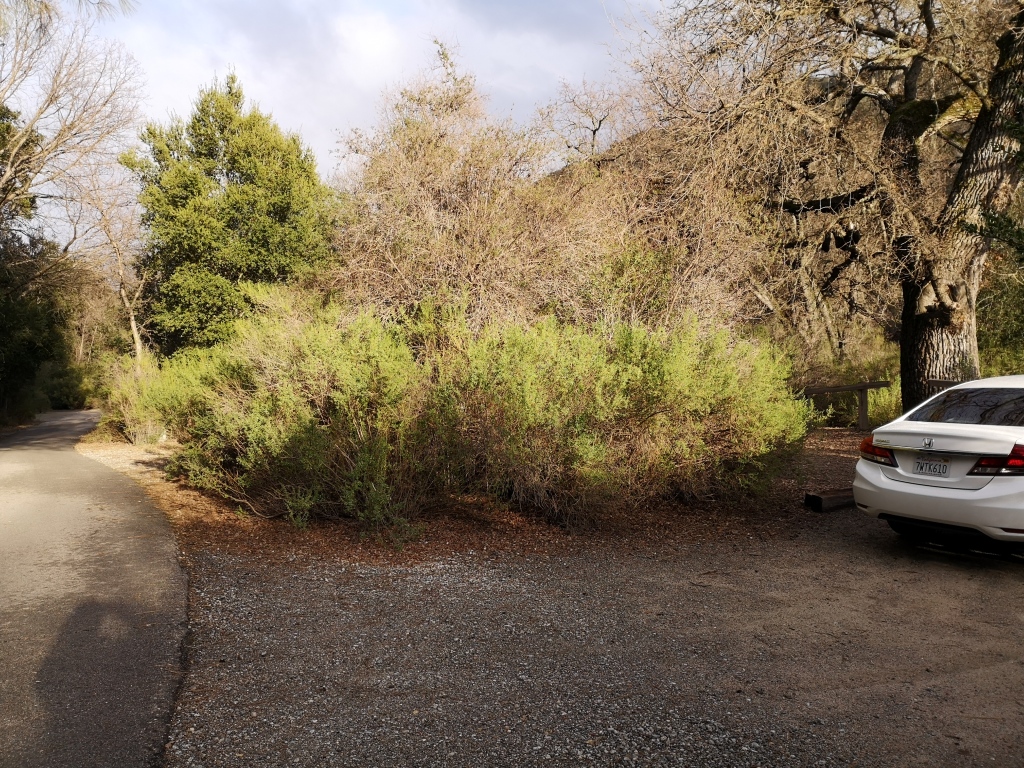
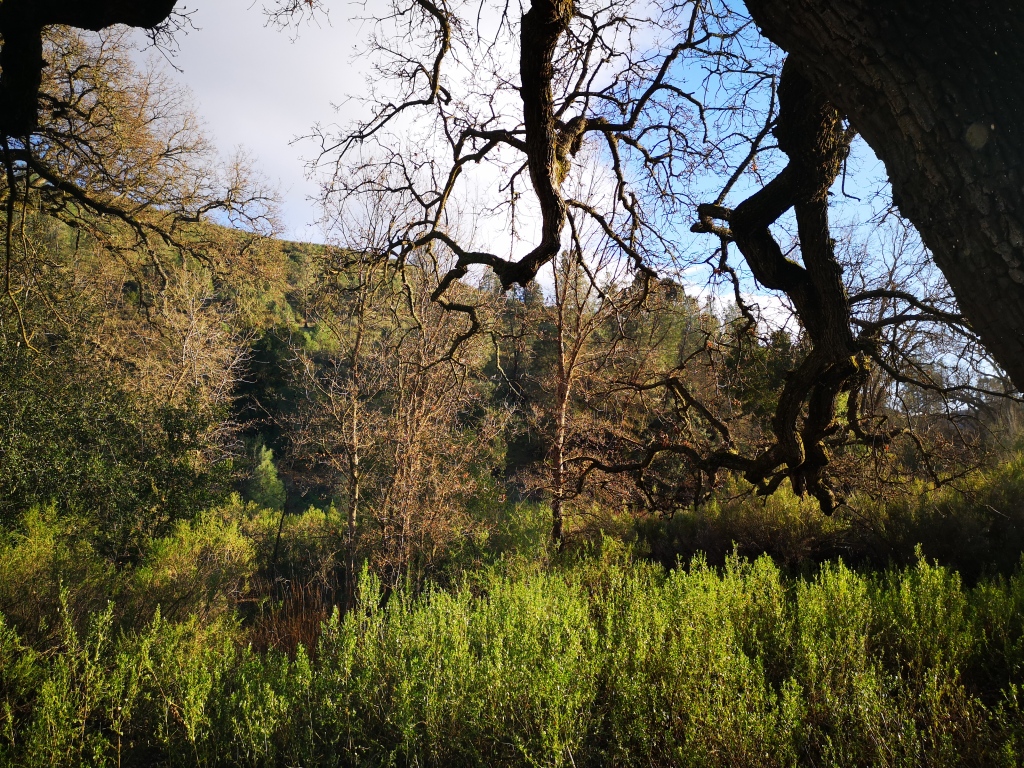
When making a shortlist of locations for this trip, it was the unusual rock formations that had drawn me to Pinnacles. The area was originally part of the Neenach volcano, but due to its location along the San Andreas fault and the movement of the Pacific plate, the section of the volcano today known as Pinnacles has actually migrated about 195 miles to the northwest of the body of the volcano! The other section can be found just north of Los Angeles. A few other features of note: it is the youngest National Park in the United States, as it was upgraded from National Monument in 2013 by the Obama Administration. Additionally, it is home to a colony of California condors, a species of bird that all but went extinct, and was brought back from the dead, so to speak (and rather appropriately for a carrion bird).
Condors are most likely the ugliest animal in existence, and are shockingly intimidating in person due to their nearly 10 foot (3 meter) wingspan. That bird is a massive, prehistoric monster that feeds on dead flesh. Terrifying, and yet we wanted nothing more than to run into one on some deserted trail. With this in mind, we selected the High Peaks loop through Pinnacles, a route that offers visitors a taste of pretty much everything the park has to offer, including a scenic stroll through Condor Gulch.
After leaving the campsite, we parked on the side of Chalone Creek Rd, by the junction of the Bear Gulch and Bench trails. We began by crossing a small bridge over the creek, then followed it up the Bear Gulch trail towards the day-use area. I’d been told that winter and spring are the best time to visit, as the summer makes the park dry, hot, yellow, and downright unpleasant, and I can confirm that the winter is an excellent time to visit.
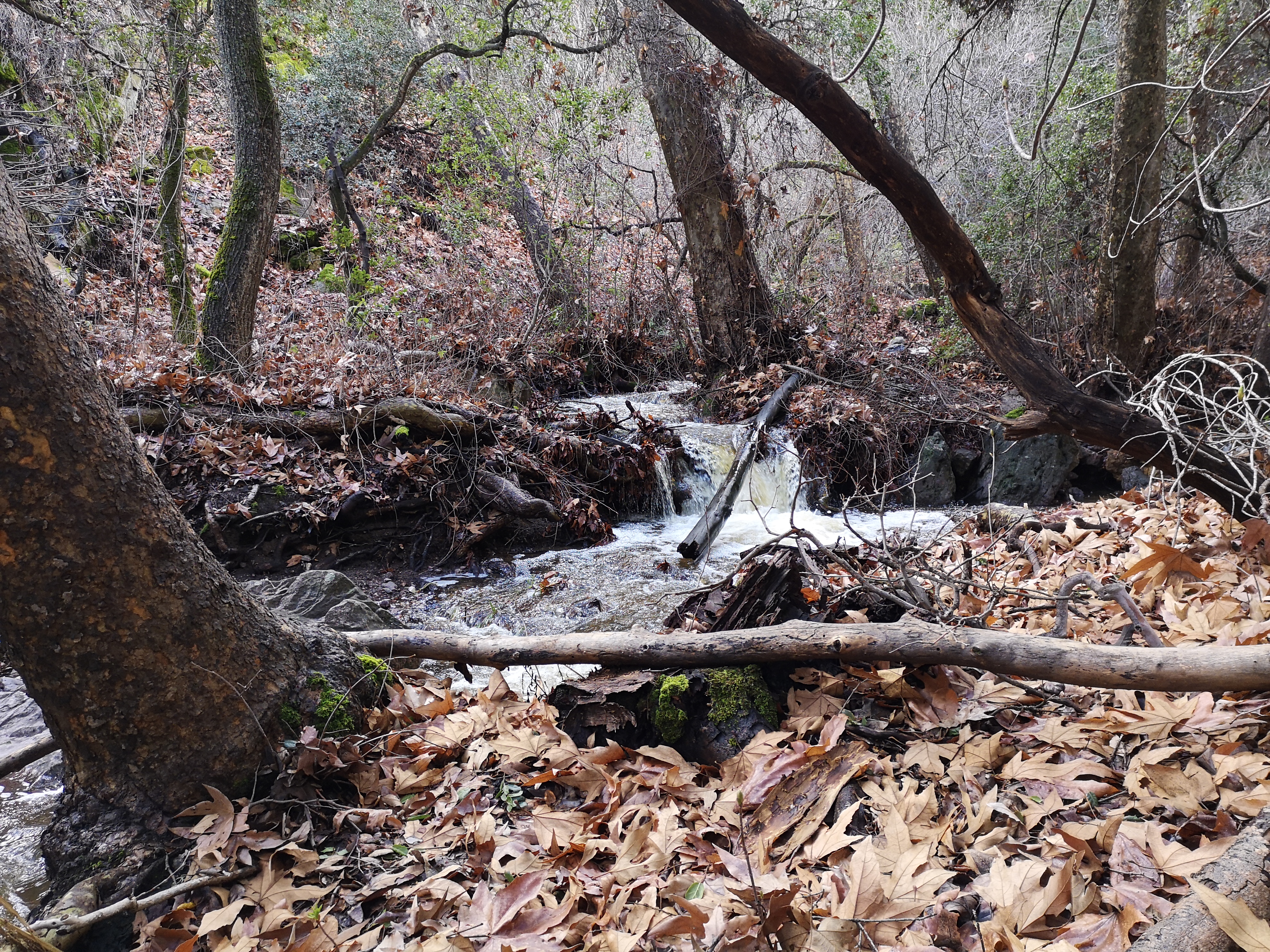
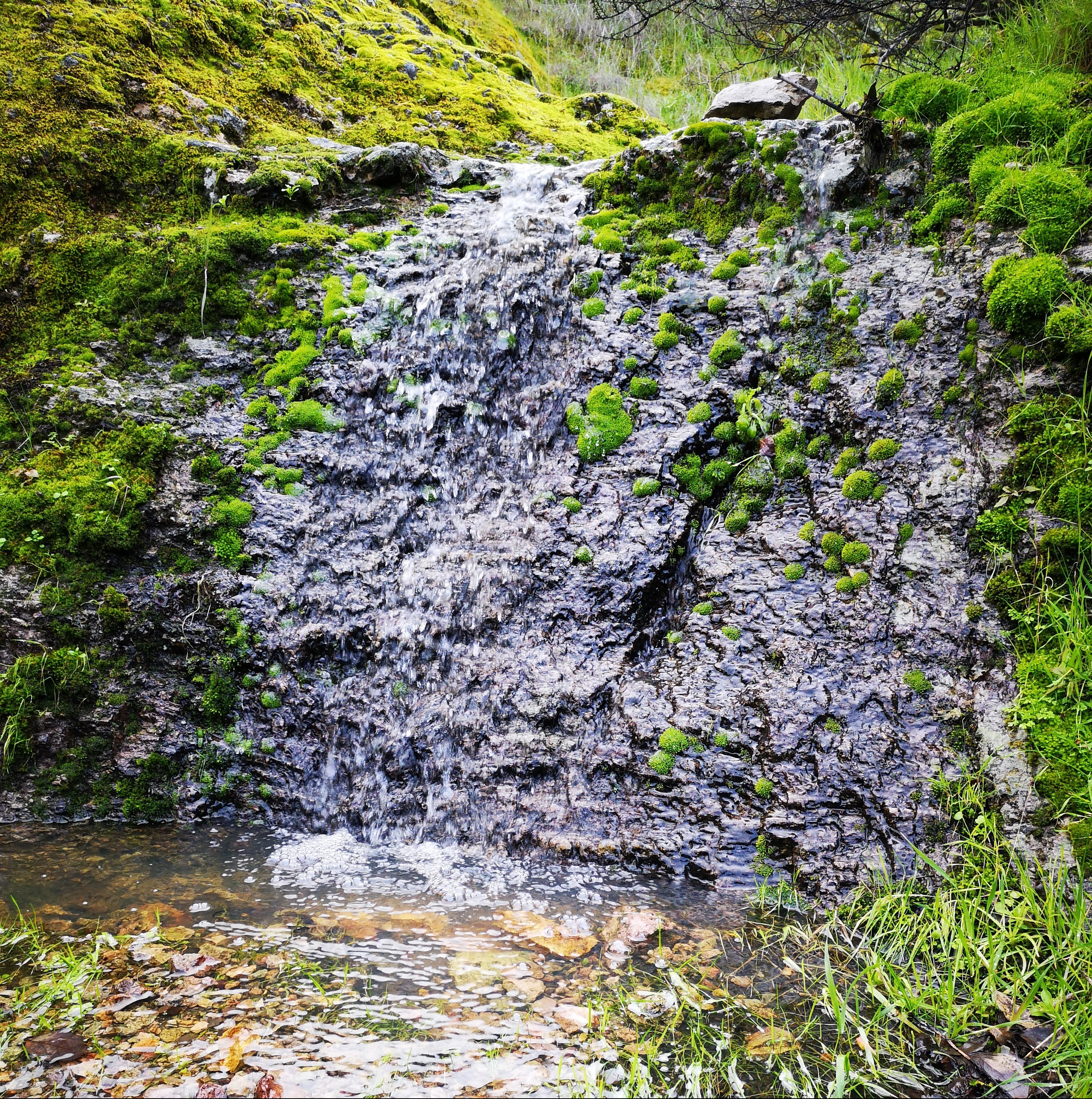
The hills were green, water was dripping off rocks, the streams were full, and small patches of snow lingered in persistent shadows. The oak-studded grasslands reminded me of the meadows of Yosemite, and the talus caves that are a major attraction of the park were actually closed due to flooding. And despite the park’s reputation for rock climbing, we saw no climbers that day, likely driven away by all the water.
Our trek consisted of a loop via the Bear Gulch and High Peaks trails, leading us through varied terrain. Bear gulch took us through relatively flat, shady trails beneath the trees. The majority of the elevation gain started soon after we rose out the greenery to the exposed, rocky High Peaks trail. The climb was broken up by frequent photo breaks to capture the jagged rock that inserted themselves into an otherwise stationary skyline.
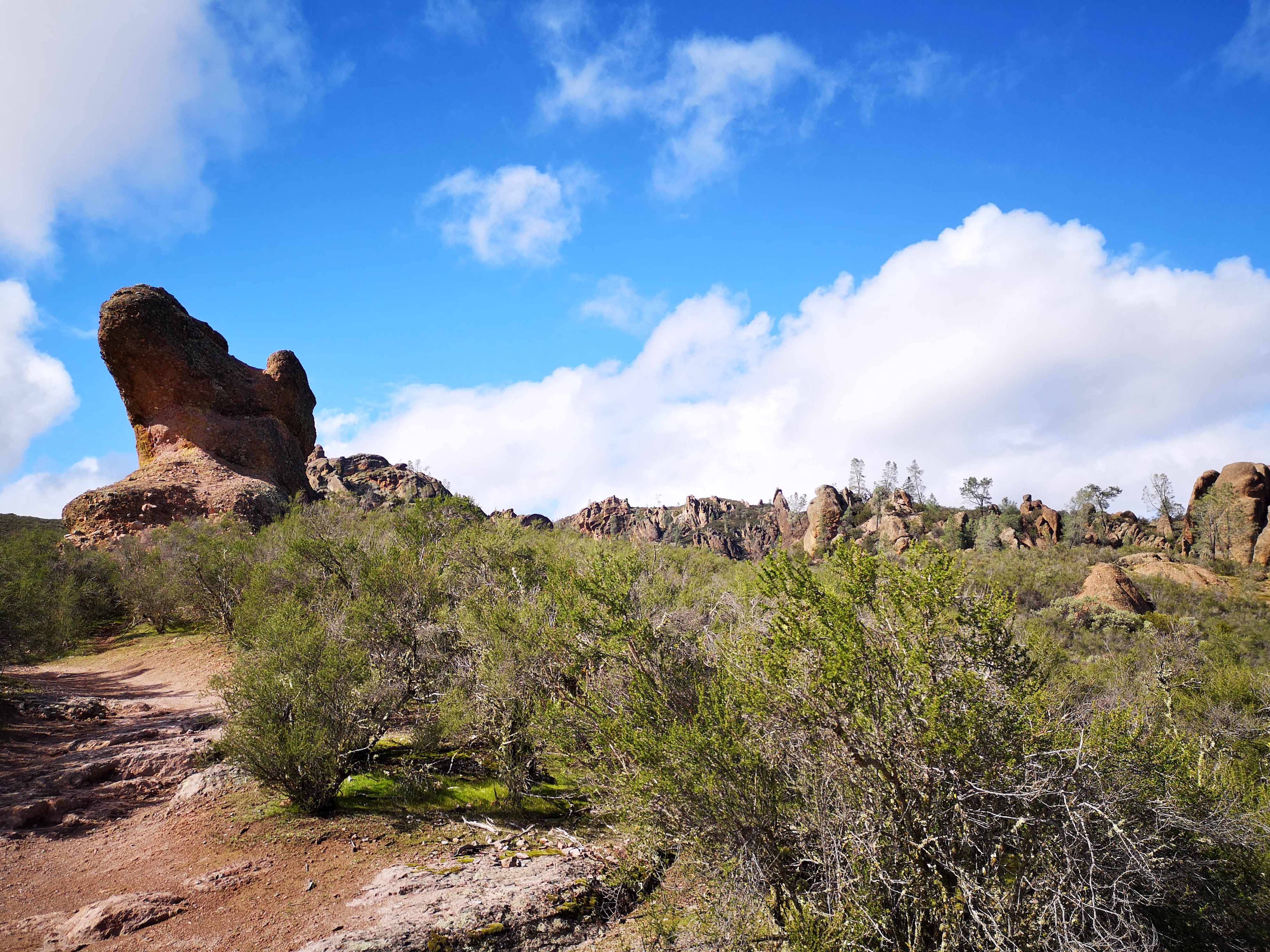
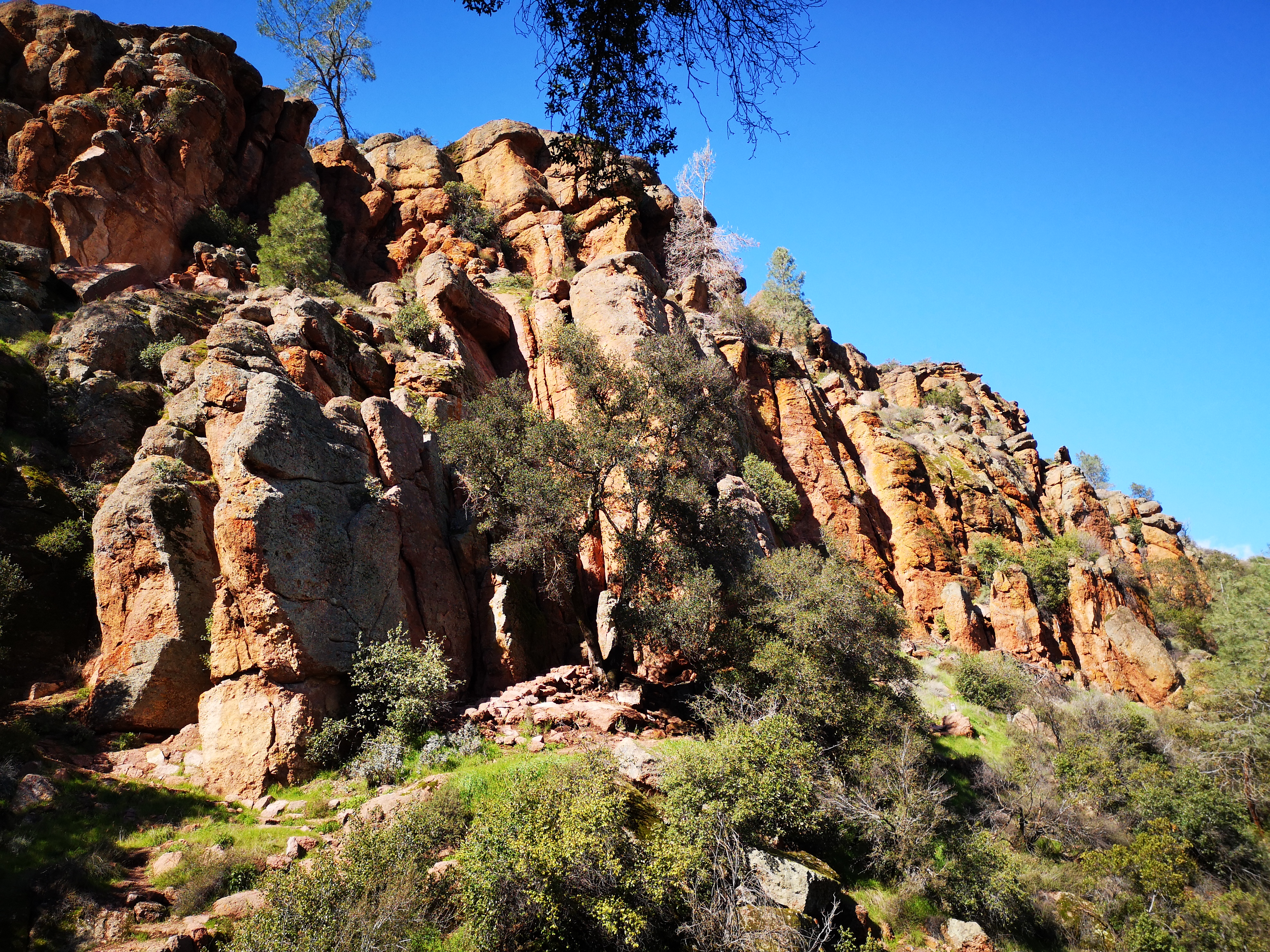
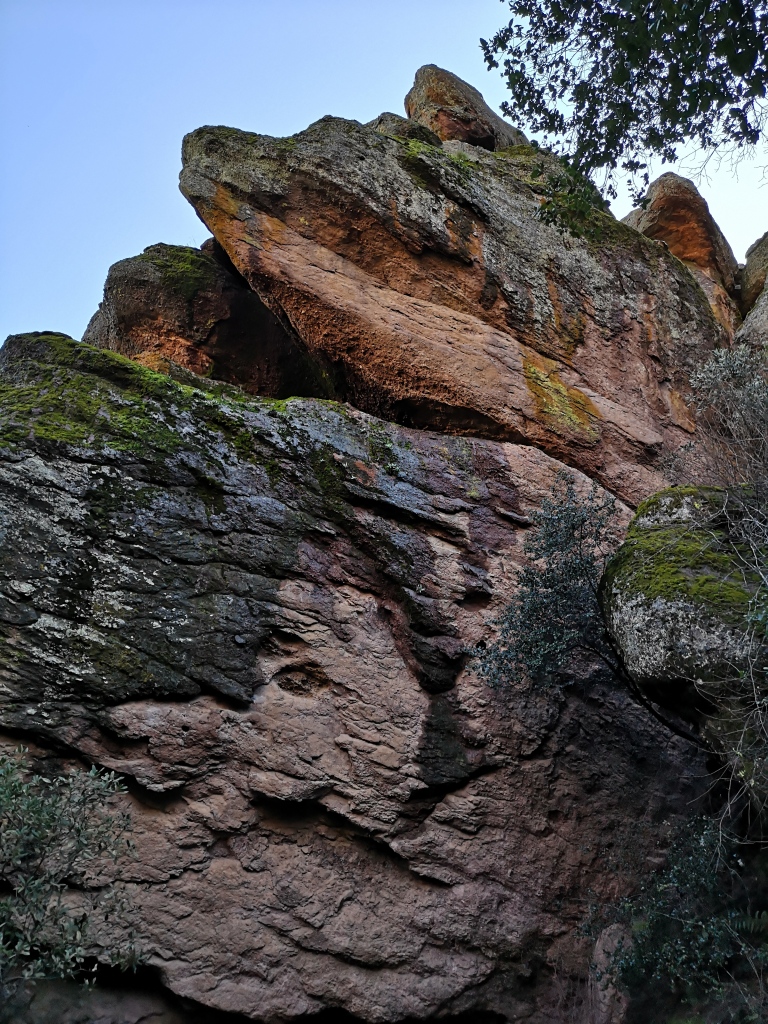
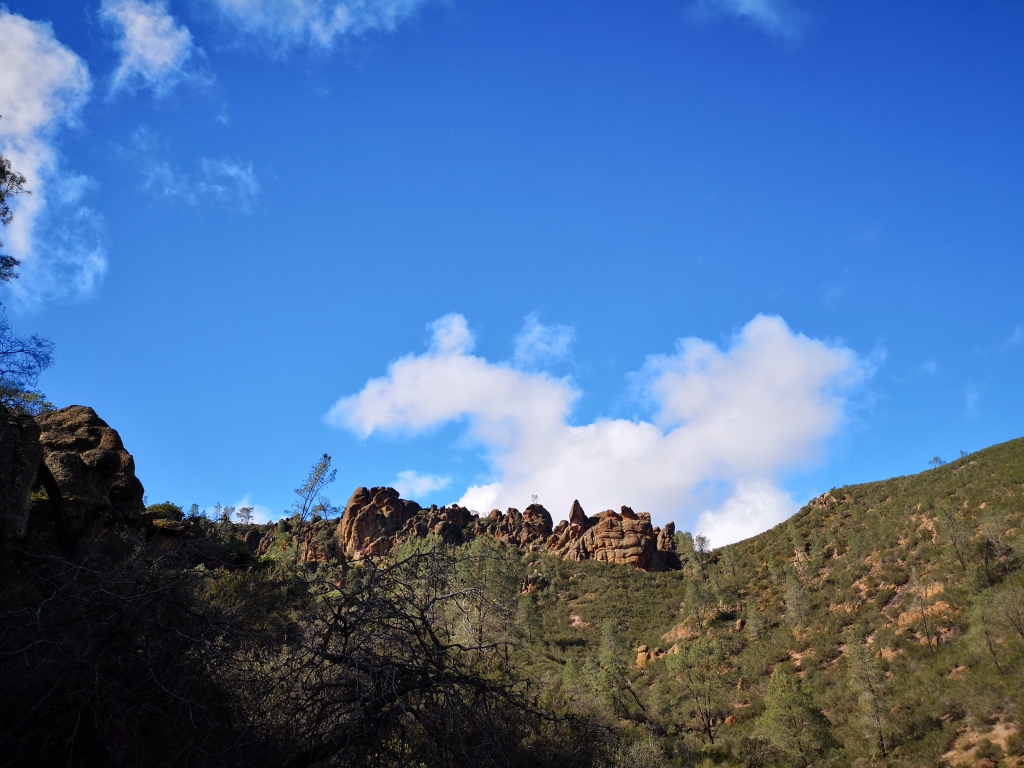
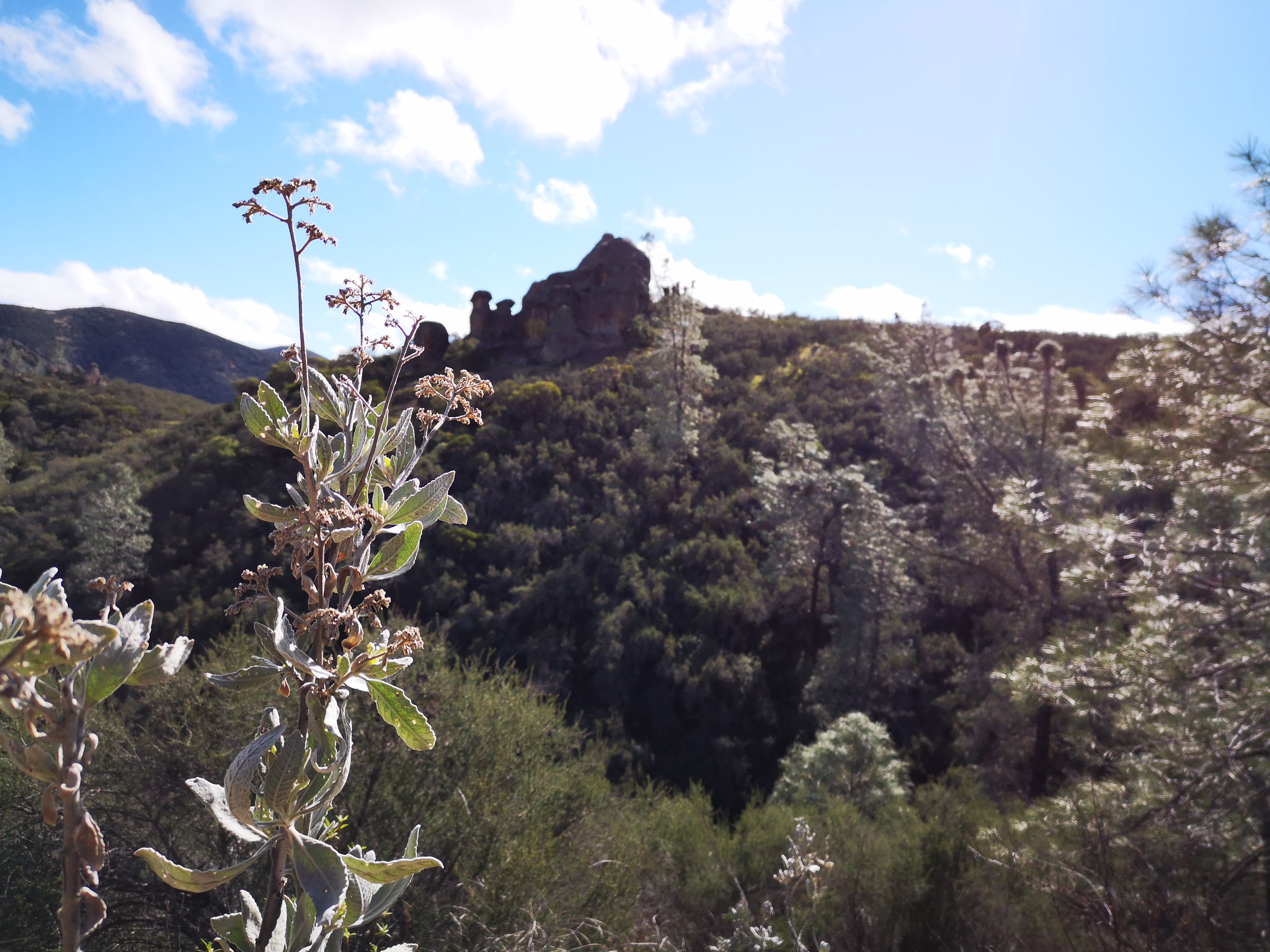
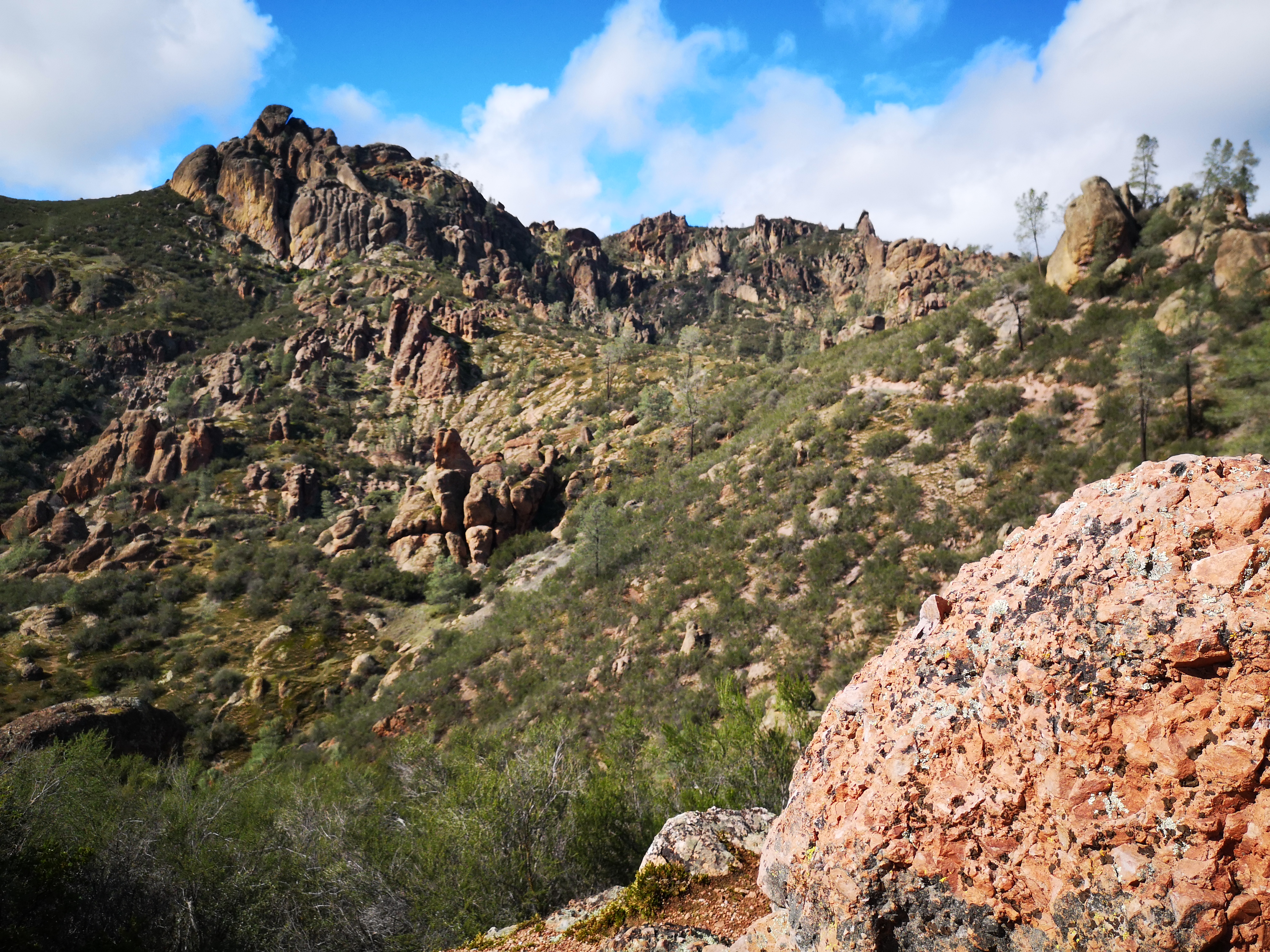
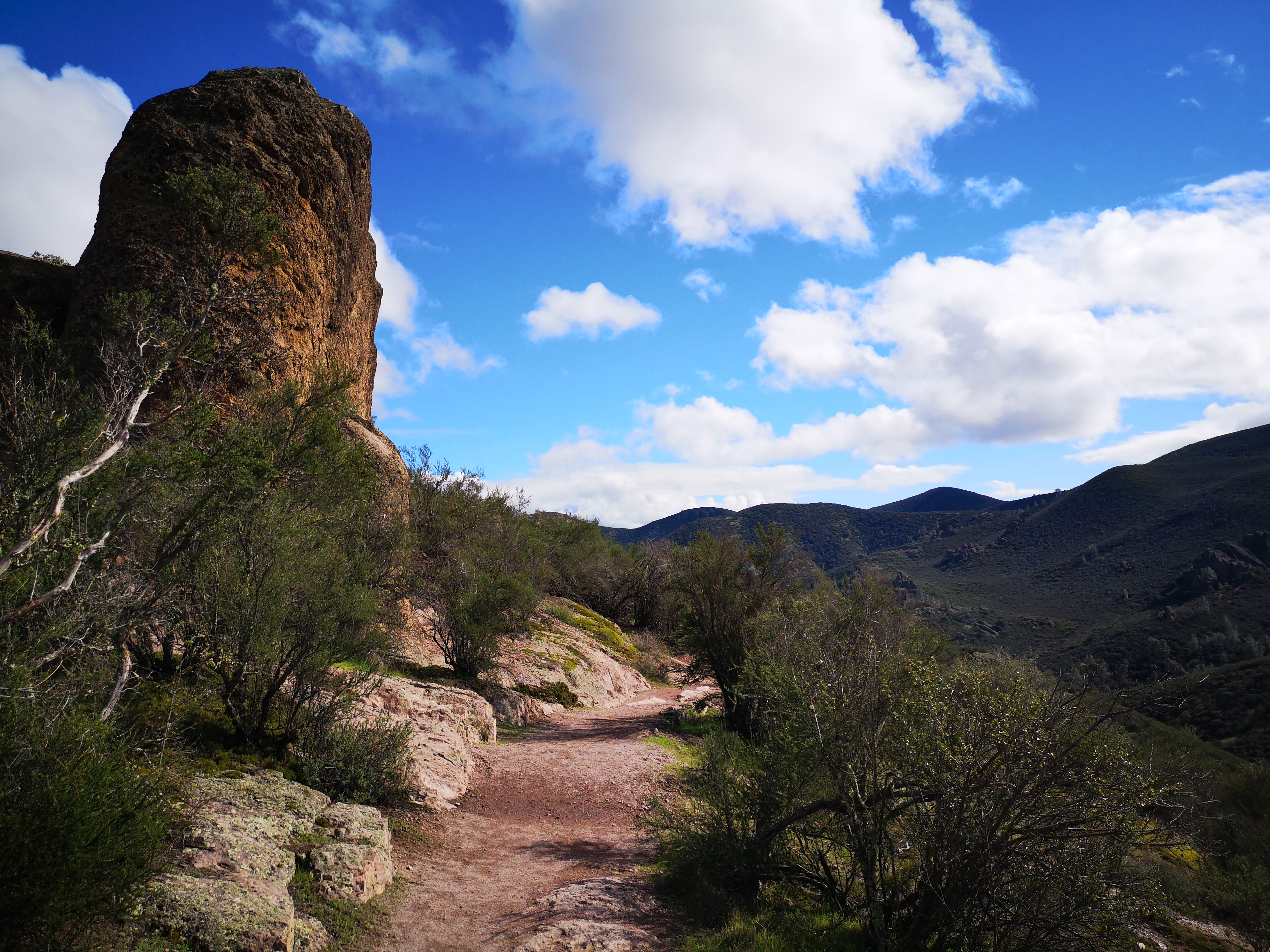
We stopped for a quick lunch at Scout Peak. Here, both east and west sides of the park could be seen. An outhouse and bench indicated that this must be a common lunch spot for hikers. While we ate, the clouds rolled in over our previously blue sky, and we decided as the first few drops of rain hit us that we better get moving.
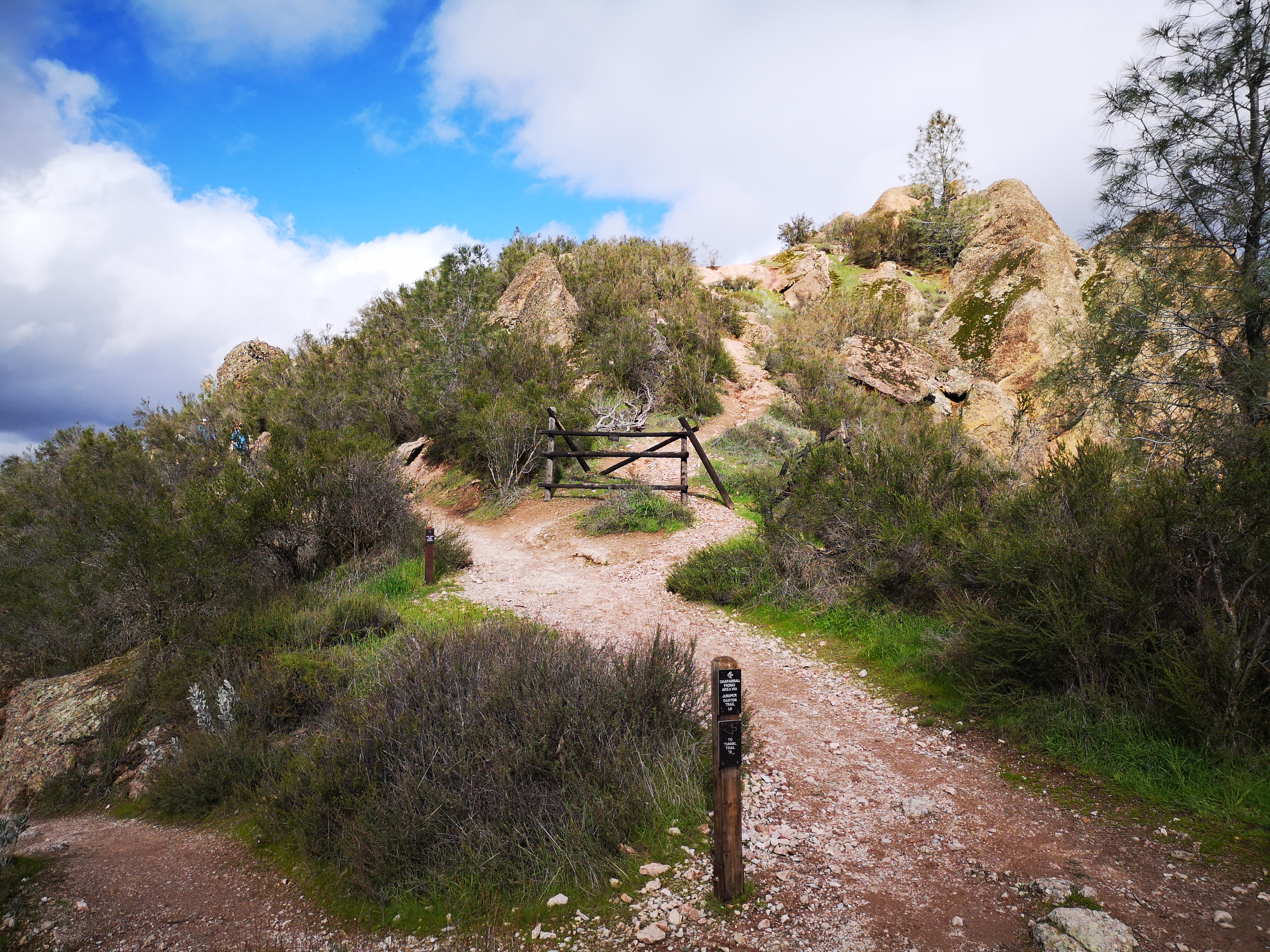
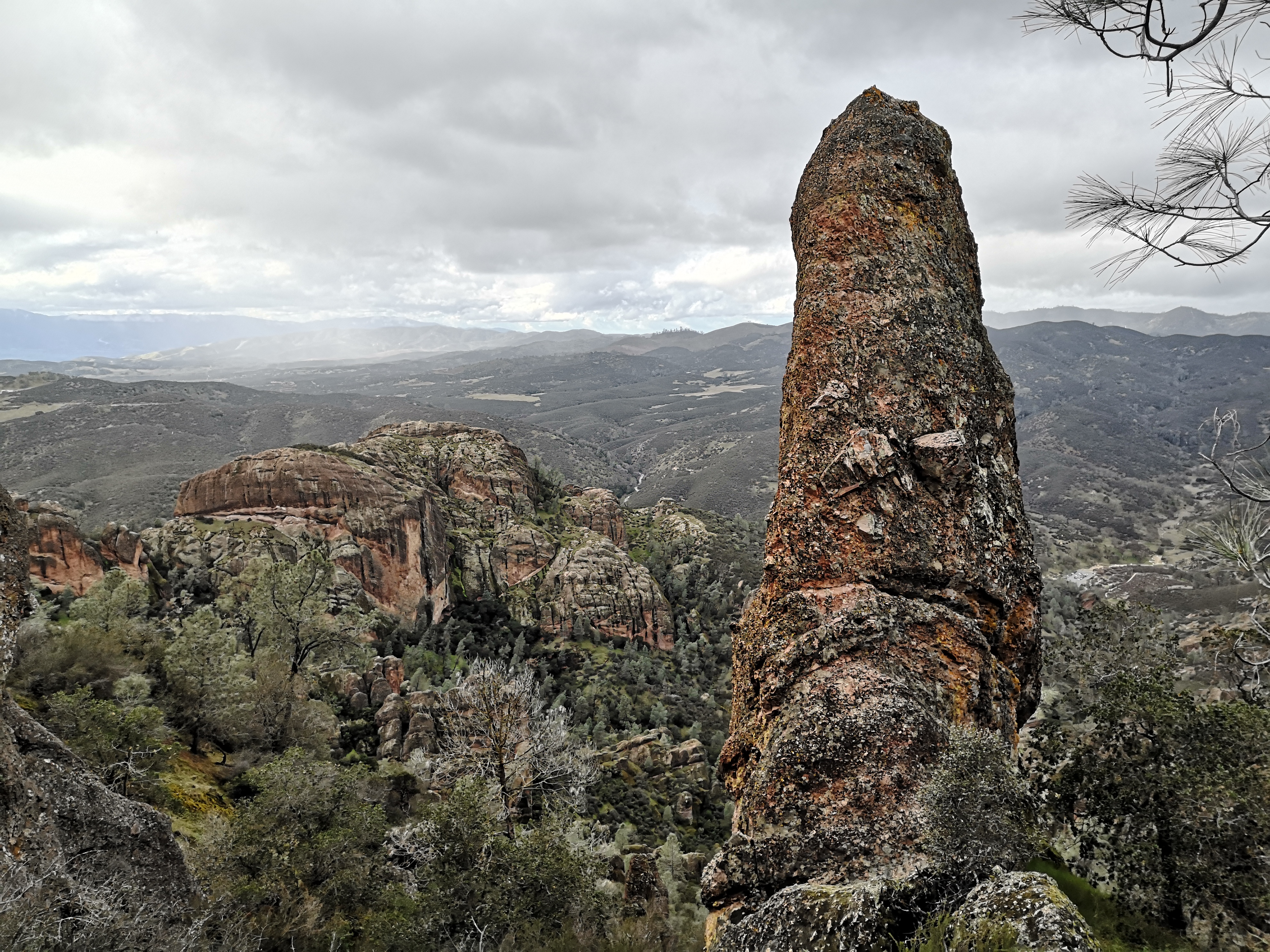
The trail after Scout Peak offered a lot of interesting sections: steps cut directly into the rock, handrails for steeper sections, and an interesting overhanging tunnel.
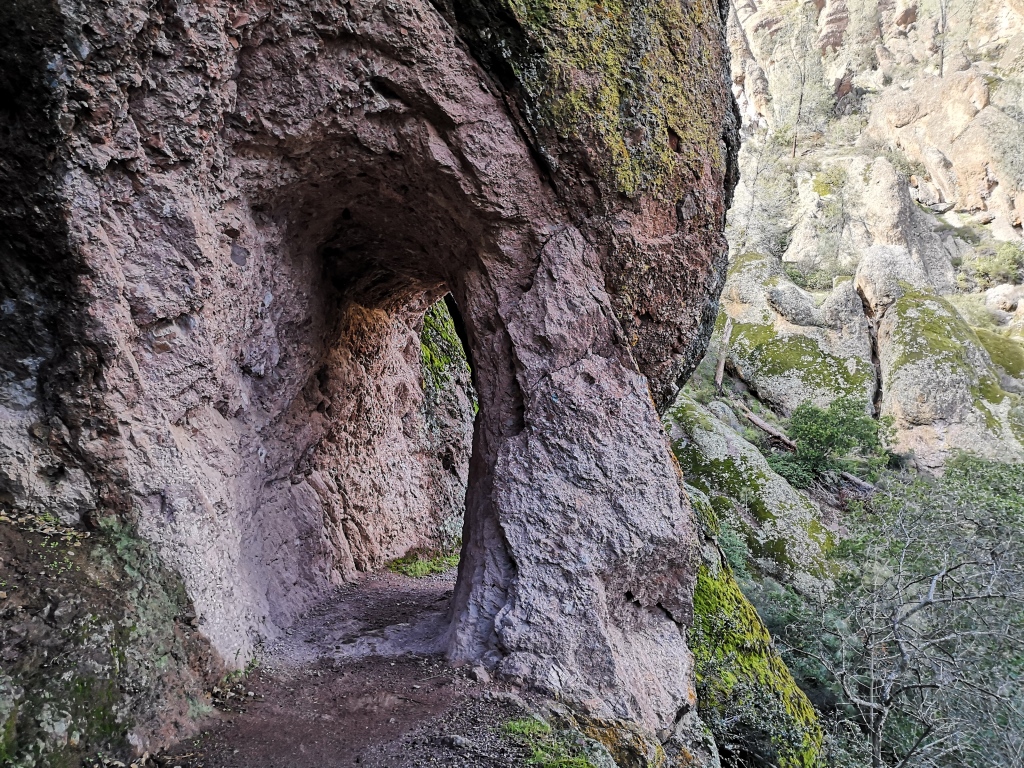
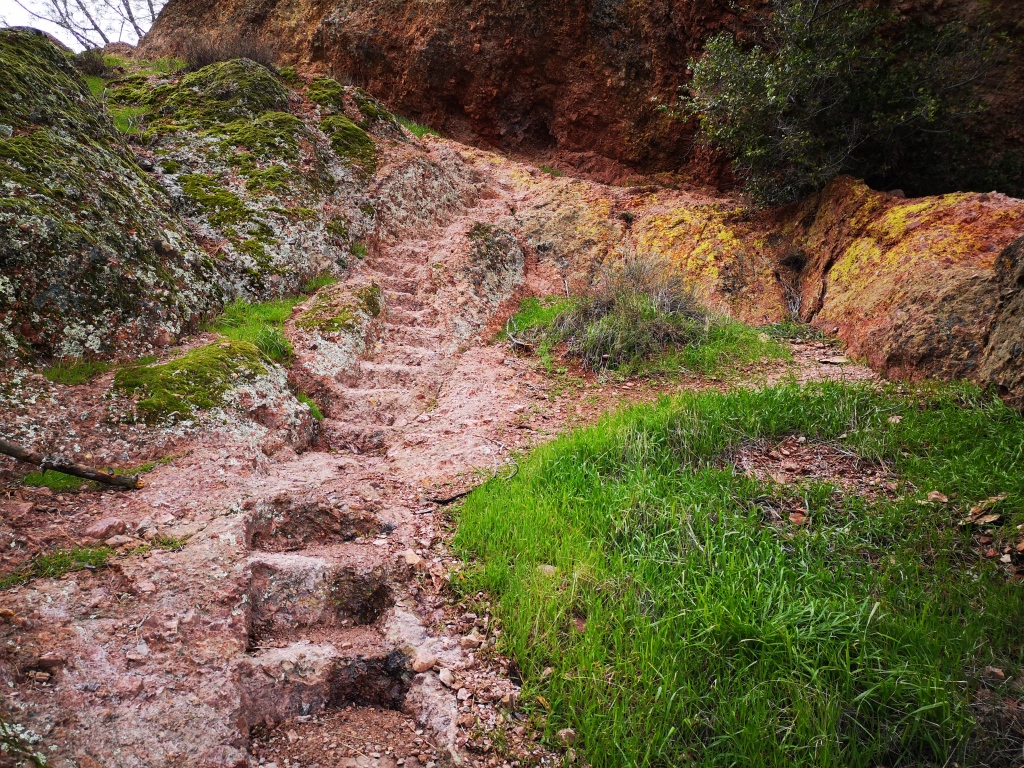
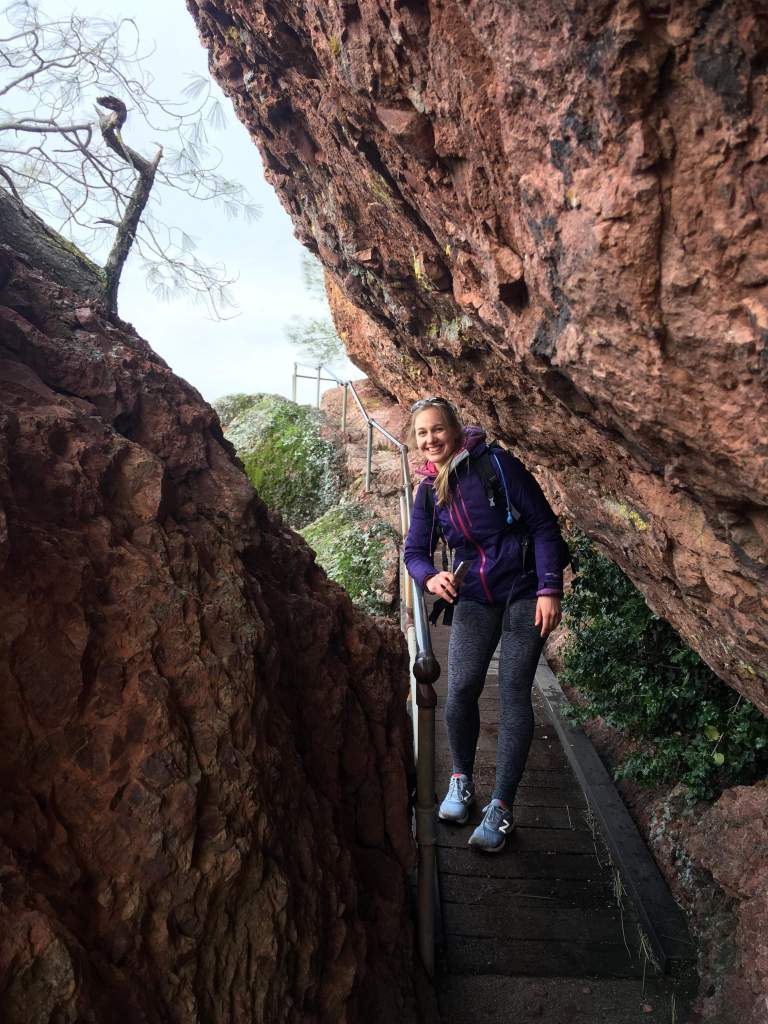
Shortly after our break, and an unexpected encounter with a man playing both a didgeridoo (an Australian wind instrument) and a Jew’s Harp (no comment – you’ll have to look this one up!) that echoed throughout the valley (“Is that the call of the condor?” I asked, wide-eyed), we ran into our first condors. Four massive, black birds were soaring beyond the ridge we traversed, and as we stopped excitedly to observe, hoping they’d get closer, they began to do just that. Soon, nearly a dozen of these mammoths had come alarmingly close to us.
Now, looking back, I don’t think we had any reason to be concerned, but as we had spent a portion of the trail discussing a video depicting one of these massive birds attacking a person, I think I had it in my head that they might not be friendly. And given the size of these birds, an alliance between a few determined and disagreeable birds could very likely result in a fatality. At one point, near the turn-off for the Condor Gulch trail, a condor came rapidly up behind me, so close I could see the number tagged on its wing. I know now that I was being paranoid, but my heart was absolutely racing! In a bizarre twist of fate, the Pinnacles park site provides a line-up of my possible attackers; however, the suspect (I believe it was #78) was absent from the list. Perhaps he flew up from the colony at Big Sur, as they are known to travel widely.
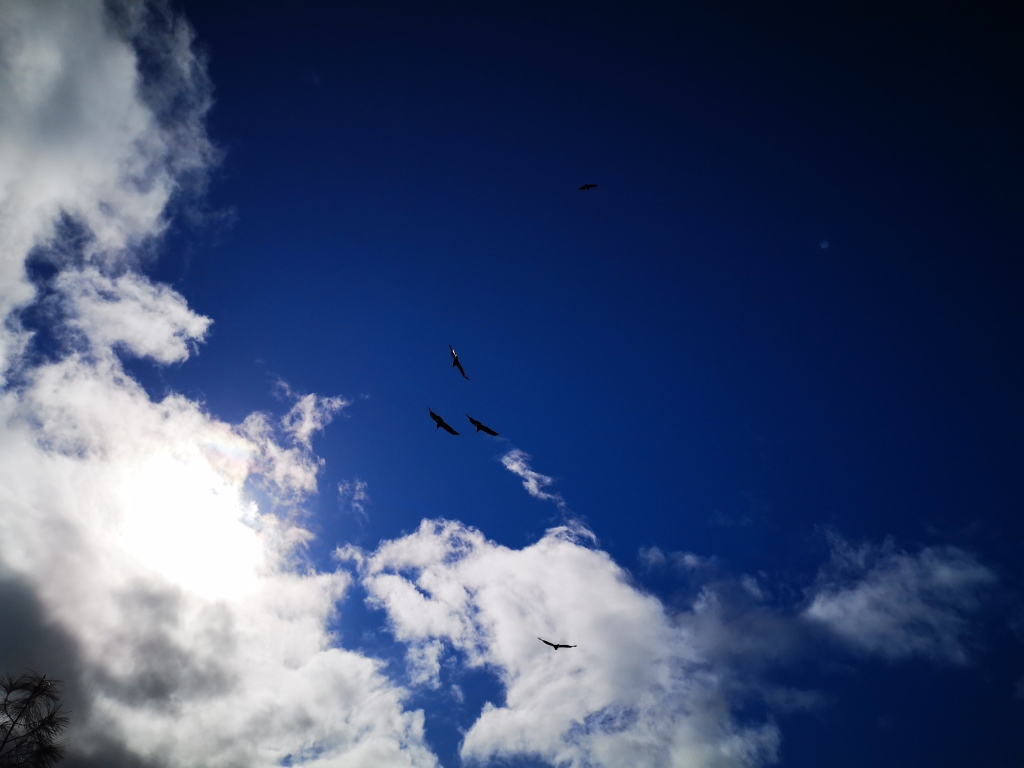
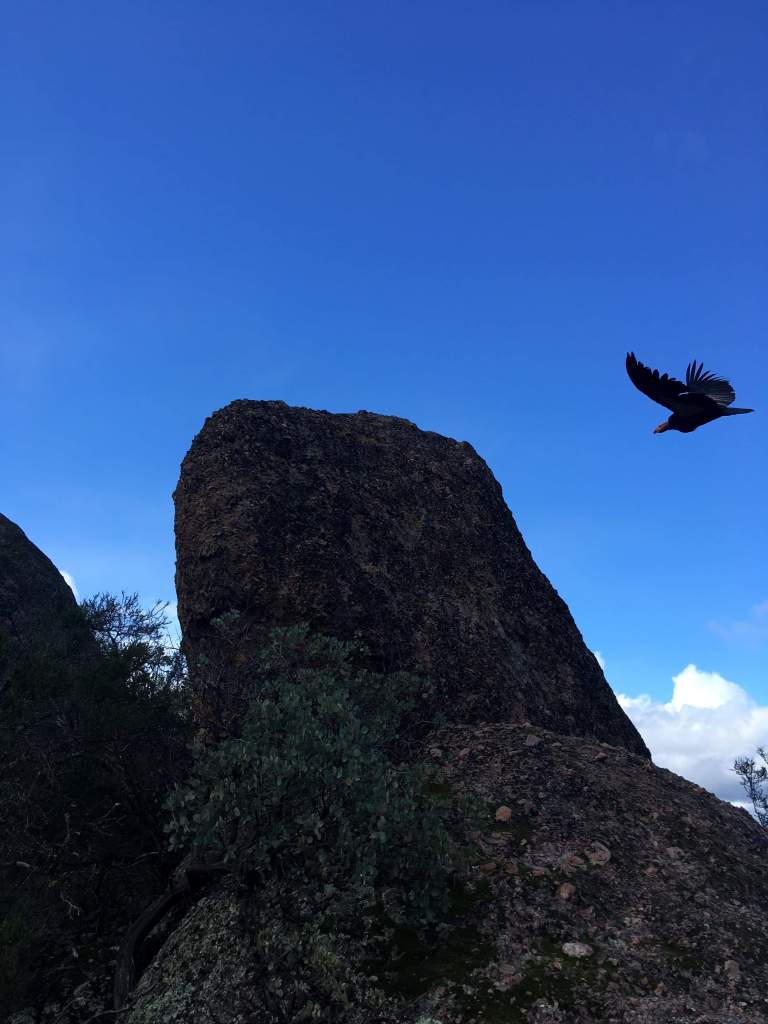
With the condors and strange rock formations behind us, the rest of the trek along Old Pinnacles trail back to the car was fairly uneventful. The ridge gave way to grassland and streams again in a gentle descent.
Upon returning to the campsite, we set to work: campfire, tacos, beer, and tequila. The weather held out, and we were treated to a dense ceiling of stars by the campfire. While the night delivered the promised rain, our mission was accomplished, and I was exceedingly glad the forecast did not succeed in turning us away.
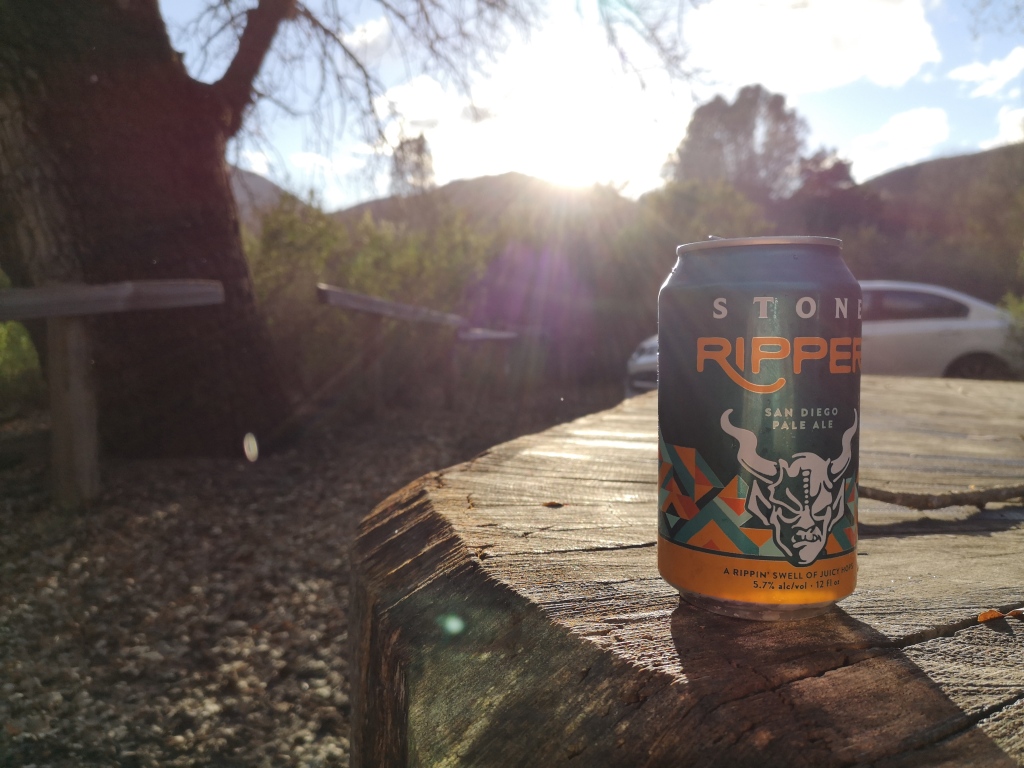
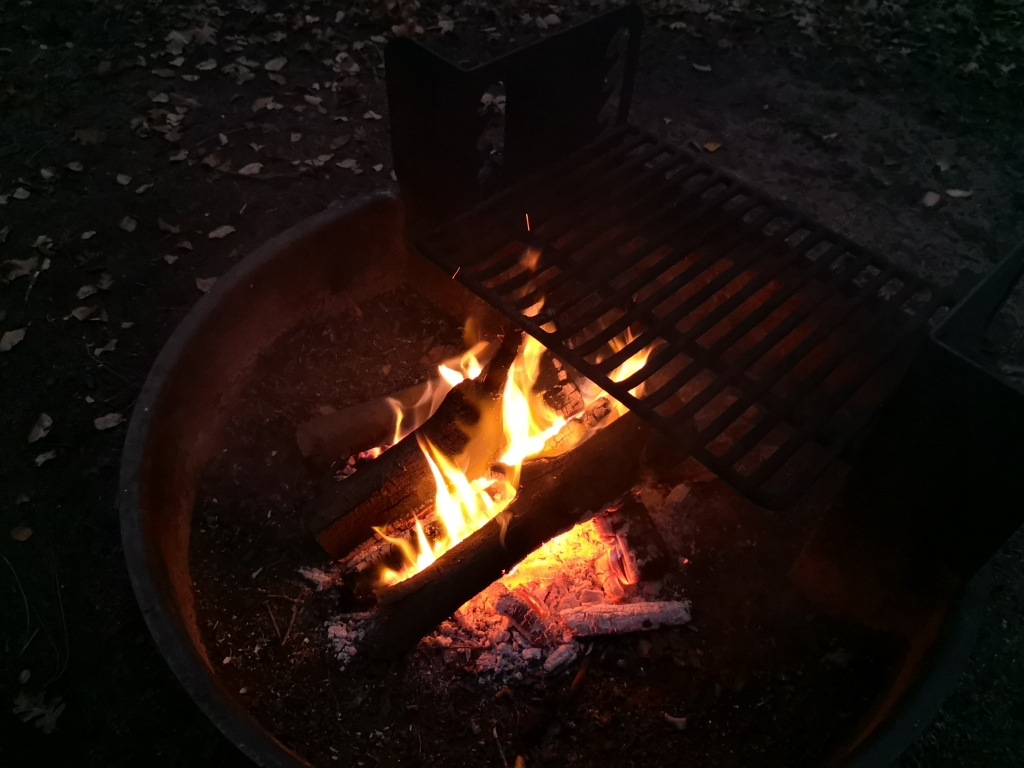
Trail Stats
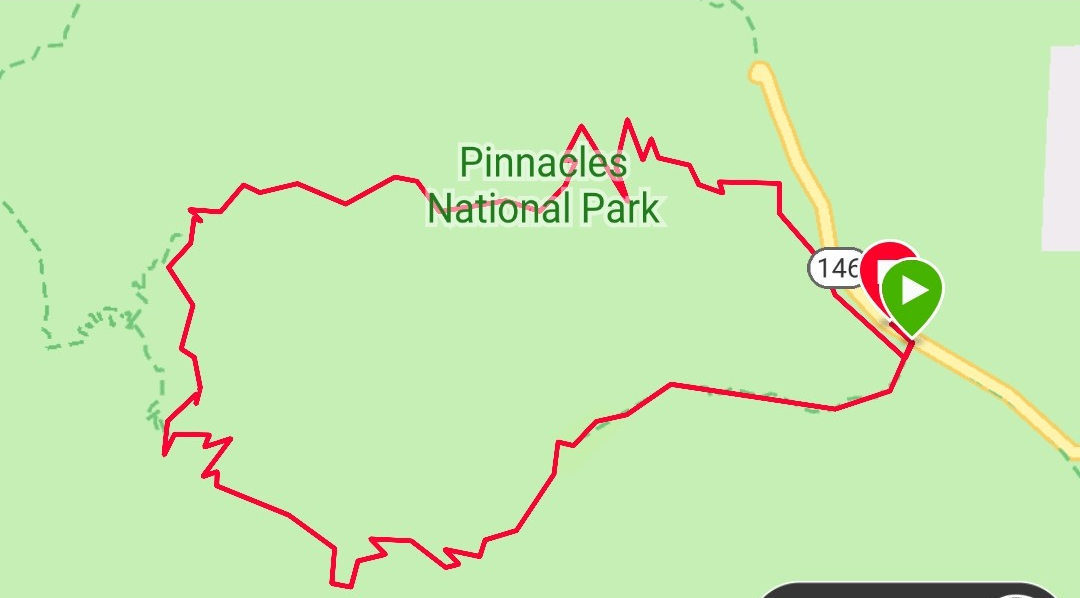
This trip took place in February, 2019. This was a pretty short one: the entire High Peaks loop was about 3 hours and 40 minutes, including a short lunch break, and plenty of condor-viewing breaks. My GPS had us at 12.4 km (7.7 miles) and about 650 m (2130 feet) of elevation gain.
Tell me what you think about condors: prehistoric monsters, or misunderstood heroes? Have I sold you on the windswept rocks of Pinnacles? Leave your thoughts below!

I appreciate you sharing this blog article. Much obliged.
LikeLike
Well thanks for reading Tommie! Glad I could offer something interesting 🙂
LikeLike